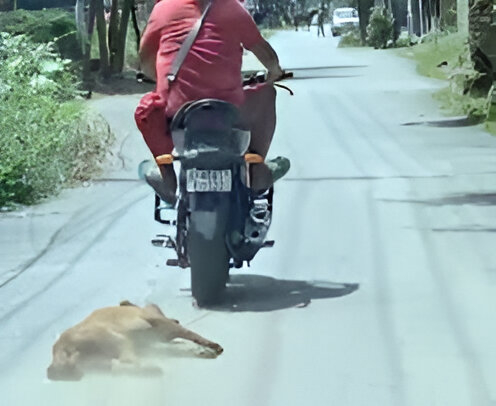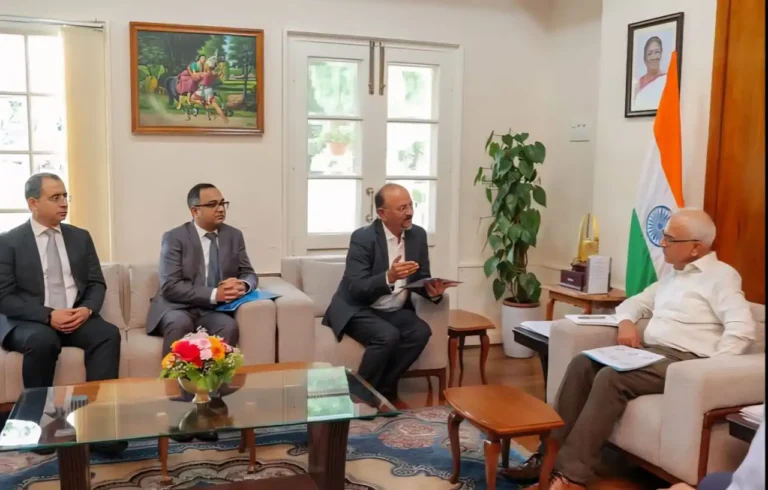Manipur SP Injured Amid Clash Between Kuki Protestors and Security Forces in Kangpokpi
Summary of the News Article
In a heated clash on January 3, 2025, between protestors and security forces in Kangpokpi district, the Superintendent of Police (SP) sustained injuries. The unrest underscores the region’s escalating tensions, which stem from longstanding grievances and recent developments. Security forces have been deployed to manage the situation, but the incident highlights the challenges of maintaining peace in volatile areas.
Unpacking the Kangpokpi Clash: What Went Wrong and Why It Matters
Introduction: A Turbulent Day in Kangpokpi
Imagine this: a peaceful protest spiraling into chaos, leaving law enforcement officers injured and an entire region on edge. That’s exactly what happened in Manipur’s Kangpokpi district. This incident is not just another headline—it’s a window into the deeper issues plaguing the region. Let’s explore what happened, why it happened, and where we go from here.
The Incident: Chaos Unfolds in Kangpokpi
The clash erupted during a protest where demonstrators and security forces faced off.
- Who Was Involved? Protestors from local communities and a contingent of security personnel.
- What Happened? The protest turned violent, with both sides blaming each other for the escalation.
- The Aftermath: The district’s SP suffered injuries, marking a serious turn in the conflict.
This wasn’t just a minor skirmish—it was a full-blown confrontation that shook the district.
Why Are Protests Escalating in Manipur?
Manipur, a state with a rich cultural heritage, has seen its fair share of unrest. The reasons for the protests are deeply rooted in socio-political and economic issues:
- Land Rights: Many communities feel marginalized and fear losing their ancestral lands.
- Ethnic Tensions: Historical grievances between various ethnic groups often resurface, fueling unrest.
- Governance Issues: Alleged mismanagement and lack of development contribute to public frustration.
The Kangpokpi clash is a stark reminder of how these issues can boil over into violence.
The Role of Law Enforcement: Balancing Act or Battleground?
Law enforcement officers often find themselves walking a tightrope in such situations. On the one hand, they must maintain order; on the other, they’re tasked with respecting citizens’ rights to protest.
- Challenges Faced:
- Limited manpower against large crowds.
- The risk of personal harm, as seen in this incident.
- Balancing force and diplomacy in high-pressure scenarios.
- Consequences of Missteps: Excessive force can worsen tensions, while a lack of action can embolden unrest.
In Kangpokpi, the injury of a high-ranking officer like the SP underscores the precariousness of this balancing act.
Understanding Kangpokpi’s Unique Dynamics
Kangpokpi isn’t just any district in Manipur—it’s a melting pot of cultures, communities, and challenges.
- Geopolitical Importance: Its location near sensitive borders makes it a hotspot for tensions.
- Economic Struggles: Limited opportunities create a fertile ground for dissatisfaction.
- Ethnic Diversity: While a strength, it also leads to occasional friction.
These factors make incidents like the January 3 clash almost inevitable, albeit deeply regrettable.
What Can Be Done to Prevent Future Clashes?
Here’s the thing: preventing such incidents isn’t just about deploying more security forces. It requires a holistic approach:
- Dialogue: Bringing stakeholders to the table to address grievances.
- Economic Development: Providing jobs and infrastructure to ease frustrations.
- Community Policing: Building trust between law enforcement and local populations.
- Conflict Resolution Mechanisms: Setting up systems to mediate disputes before they escalate.
The Broader Picture: What Does This Incident Mean for Manipur?
The Kangpokpi clash is symptomatic of larger issues in Manipur:
- Recurring Violence: This isn’t an isolated event but part of a troubling pattern.
- Trust Deficit: Between communities, and between the public and the government.
- National Attention: Incidents like this put the spotlight on Manipur, for better or worse.
Addressing these challenges requires political will, public cooperation, and a long-term vision.
The Human Cost: Stories That Go Unheard
Amid the headlines, it’s easy to forget the individuals affected by such incidents.
- The Injured SP: A stark reminder of the personal risks faced by law enforcement officers.
- Protestors: Many are ordinary citizens with legitimate concerns, not just agitators.
- Local Communities: Living in a constant state of tension takes a toll on mental and physical well-being.
Understanding these human stories is key to finding lasting solutions.
How Social Media Fuels the Fire
In today’s world, incidents like these play out as much online as they do on the ground. Social media can be a double-edged sword:
- The Good: It raises awareness and mobilizes support for legitimate causes.
- The Bad: It spreads misinformation and escalates tensions.
In Kangpokpi, social media likely played a role in both mobilizing protestors and inflaming the situation.
What’s Next for Kangpokpi and Manipur?
So, where do we go from here? The immediate priority is restoring peace, but the long-term goal should be addressing the root causes of unrest. This means:
- Building Bridges: Between communities, and between the public and authorities.
- Investing in Development: To provide hope and opportunities.
- Learning from Mistakes: Analyzing what went wrong in Kangpokpi to prevent future clashes.
A Personal Reflection: Why This Story Matters
Stories like these aren’t just about statistics or headlines—they’re about people. They remind us of the fragility of peace and the importance of vigilance, empathy, and action.
If there’s one takeaway from Kangpokpi, it’s this: we all have a role to play in building a more peaceful and just society.
FAQs
- Why did the clash in Kangpokpi escalate to violence?
The protest escalated due to longstanding grievances and tensions between protestors and security forces. - What is the significance of Kangpokpi in Manipur’s socio-political landscape?
Kangpokpi is a diverse district with unique challenges, making it a focal point for both development and unrest. - How can such clashes be prevented in the future?
Through dialogue, economic development, community policing, and conflict resolution mechanisms. - What role does social media play in such incidents?
Social media can both raise awareness and spread misinformation, influencing the dynamics of protests. - What are the broader implications of this incident for Manipur?
It highlights the need for long-term solutions to recurring issues like ethnic tensions, economic struggles, and governance challenges.




